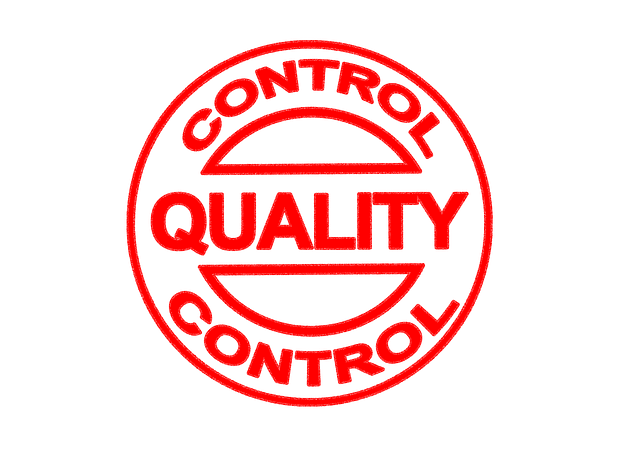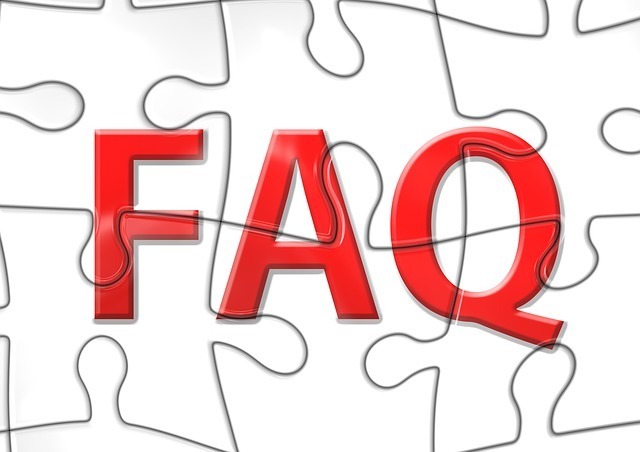
This is a custom HTML / JavaScript Element
In order To See Your Custom HTML/JavaScript Code in Action You Must Click On The Preview Page Button, Your Code is NOT going to be active in the edit mode
Google loves video content, so it's no shock that videos can improve your SERP ranking. They may also enhance the page speed of your website, reduce bounce rates and even boost social media engagement.
When optimizing your video for search engine optimization (SEO), the first thing that should be taken into account are its title and thumbnail. This factor is of paramount importance and can significantly boost click-through rate (CTR).

What is SERP?
For those who do not know, SERP stands for "Search Engine Results Page." It refers to the page that is displayed by a search engine in response to a user's search query. This page typically shows a list of search results relevant to the user's query, along with various elements such as featured snippets, knowledge graphs, images, videos, and ads.
The order in which the results are displayed on the SERP is determined by the search engine's ranking algorithm, which takes into account various factors such as the relevance and quality of the content, the website's authority and popularity, and the user's location and search history. The goal of SEO (Search Engine Optimization) is to improve a website's visibility and ranking on the SERP, to attract more organic traffic from search engines.

How to Improve Search Ranking
Videos on your website can be an effective tool to boost your search engine ranking (SERP) and organic traffic. Videos help establish trust with potential clients, providing a tangible way to demonstrate the benefits of your products or services.
Moz' study indicates that adding videos to your website can boost backlinks by almost three times, leading to more high-intent organic traffic. Furthermore, having an expansive video library on your site helps build a reputation as an authoritative authority within its industry.
Google favors content that answers direct user inquiries, and videos are an ideal medium for this. They're easy to comprehend and engage with, plus they can answer common questions about your business that search engines prioritize.
One essential aspect of a successful video SEO strategy is getting links from other websites to your page. This can be accomplished by having people share your content on social media. Not only does this increase your website's rankings, but it may also lead to increased sales and conversions.
To achieve these results, be sure to include relevant keywords in your video titles and descriptions. Furthermore, adding schema markup makes videos easier for Google to locate and index.

Another of the best ways to optimize your video for search is to include a transcript, which will enable viewers to better comprehend its contents. Furthermore, having a transcript allows Google to comprehend its context and display it alongside related searches.
Video content is becoming increasingly important to boost websites' SERPs, and this trend looks set to continue. But you must ensure your video is valuable and beneficial for viewers; otherwise, everyone involved could end up wasting their time watching an ineffective video.
A successful website should include a high-quality video that tells the story of your company. This could be in the form of product demonstrations or introductions to team members. Furthermore, video can be used to convey values and mission statements as well as demonstrate how you work with customers.

Match the Search Queries
If you're thinking about adding video to your website, there are several ways in which it can improve its SERP ranking. These include optimizing videos with titles and descriptions that match search queries, as well as including keywords in the content itself.
Videos can help boost your site traffic by increasing engagement with visitors, decreasing bounce rate and encouraging them to stay longer on your webpage. Furthermore, having video on board could boost SEO ranking as search engines prioritize websites featuring video on their pages.
Videos are more captivating, and personal than written content. Furthermore, videos have the power to convert potential customers into paying clients - so it's no surprise that many businesses are incorporating them into their marketing strategies.
Video blogs can be an effective tool for communicating news, announcements, or other important information with your audience. For instance, if you need to make an important announcement or promote a new product launch, consider creating a video blog as way of telling your story and cultivating brand awareness in an engaging manner.
Video content is especially popular on social media platforms like Facebook and Twitter, where it can reach an even wider audience than written material. According to Wistia's study, pages with videos had an average time spent of seven minutes and 21 seconds on pages compared to two minutes and 48 seconds without them.

Another way videos can benefit your website's SEO is by improving user experience. Uploading video helps users quickly locate and watch what they need, increasing their trust in both you and your brand.
Additionally, if someone watches your video on an external platform, it could result in a click-through to your website, which significantly boosts rankings and traffic. This is because video's full watch time counts as time spent on page, helping search engines gauge how pertinent your content is to a user's query.
Crawlability
The initial step to improving search engine optimization of your website is making sure all pages are crawlable. This implies they contain high-quality content that meets Google's algorithm standards.
Videos can significantly boost the crawlability of your website by conveying a strong message that your content is useful and pertinent. This is especially true when used for educational purposes such as explaining complex ideas or demonstrating how a product functions.
Search engines require your website to offer valuable information, so this combination of high-quality video and text provides them with an ideal combination of data.

Video can also help improve your site's SEO because it encourages visitors to stay longer on your page. This is essential as Google believes the more time a visitor spends on a given page, the higher its ranking in SERPs will be.
It's essential to remember that search engines like Google prioritize making content easy to discover and consume. To achieve this goal, utilize clear labels on videos as well as captions or transcriptions of what happens in the video.
Captions can be an excellent way to ensure that your content is accessible to everyone, including those with hearing impairments. They also help maintain visitors on your site and boost the number of social media shares you receive.
Another way videos can benefit your website's SEO is that they increase page loading speed. This factor is crucial, as search engines take page loading speed into account when ranking websites. Utilizing a hosting service with fast load times is an effective way to ensure that pages load quickly.
Thirdly, videos can boost your website's SERP due to their ability to showcase your brand. This is an effective marketing tactic, and many businesses are taking advantage of it. By adding videos to your website, potential customers will see who you are and what services you offer them. Doing this makes your site much more captivating for potential clients and helps you stand out in the marketplace.

Engagement
Videos on your website are an excellent way to boost engagement with your brand and draw in new visitors. Furthermore, they offer a more tailored experience for site visitors than text or images alone, making them much more effective at advertising your products than static text does.
Videos have also been proven to increase dwell time on your website, which is one of the key ranking factors in Google's algorithm. Dwell time refers to how long visitors stay on your page before leaving; increasing it will aid in optimizing your SEO efforts.
Video can be an effective traffic driver due to its quick and accurate communication of information, especially if the content is pertinent to your business. Furthermore, viewers tend to retain more details from video than text does, making them more likely to remember your product or service after watching a video.
It's wise to include a call-to-action in your video. This can be placed at the beginning, end, or interspersed throughout the message. Doing so ensures viewers know what action should be taken next - whether that be purchasing something or scheduling an appointment with customer service.
Another way to increase engagement is creating eye-catching thumbnails for your video content. A captivating thumbnail will entice viewers to click on and watch your video, thus increasing their likelihood of completing a conversion.
Consider placing your video content on pages with higher page ranks such as homepages and landing pages. Doing so will allow your video to appear on the first page of search results and significantly boost traffic from those search engine queries.

Videos on your About Us and Jobs pages can enhance these pages, providing an excellent opportunity to engage current customers and attract potential employees. Furthermore, videos serve to demonstrate your company's values and culture.
Video on your website can also be an effective way to increase the number of backlinks that point back at you, thus improving its SEO performance. Backlinks refer to links from other websites with high domain authority and link popularity that point directly at yours.
How to Optimize Your Website Video Content to Improve Search Engine Rankings
Video content can be an incredibly effective tool to engage your viewers and boost your website's search engine ranking. But unless the video content is optimized properly, none of this will matter.
Video SEO is all about using optimization techniques to help search engines better comprehend what a video content entails and where it can be found. It is just as essential as optimizing a webpage for a keyword phrase. So, how to improve search results?

Keywords (Search Queries)
Video SEO (VSEO) is the practice of optimizing video content for search engines. It takes the same techniques used on webpages to enhance a page and applies them to videos as well.
One of the most crucial steps you can take when trying to boost your website's search engine ranking with videos is using keywords. Your keywords should be pertinent to the video topic that you're optimizing for and have a high chance of being searched by those searching for information related to what your video is about.
Finding the correct keywords is paramount for getting your videos noticed in searches and improving your YouTube search engine rankings. To achieve optimal outcomes, research and identify long-tail keywords specific to your content.
Make sure your titles and descriptions contain keywords-rich content. Doing so can help boost the ranking of your videos in Google's search results, increasing the chance that they are watched by a potential viewer.
Another critical factor to consider is creating a video sitemap. This file can be submitted to Google and other search engines, letting them know where your video content resides on your website. Furthermore, adding structured data to your sitemap tells Google how to index and display it correctly in search results.
In addition to the title and description, you should also include a thumbnail image for your video. This image will be the first thing viewers see when they click on your video, so make sure it's visually captivating and appealing.

Additionally, adding video transcripts to your videos is a wise idea since these will increase their exposure and allow search engines to read them more easily. Plus, more text on each page means better indexation and higher rankings in results.
Finally, optimizing your XML sitemap for videos is essential. While this may seem like a complex undertaking, take baby steps and you will see results; eventually your video content will rank higher in search engine results.
Descriptions
Optimizing your website’s search engine ranking with videos can be done in several ways. Utilize keyword research to identify relevant terms for targeting in the titles, descriptions, and tags of your video content. Furthermore, add structured data like meta-descriptions and thumbnails to each video page for added visual appeal.
Titles and descriptions of your video content are crucial for SEO, so take time to craft them carefully. This includes using the correct keyword in the title as well as making sure the material is concise yet captivating.
It is necessary to ensure your title has a high click-through rate and is pertinent to the video's content. The more engagement your videos receive, the higher their chances are of ranking on Google's results page.
As a rule, only one video per page is recommended. Doing so allows you to focus on your keyword strategy and ensure fast page load times for visitors.
As we previously mentioned, video transcript can be especially beneficial if it includes relevant keywords. It also assists viewers who have difficulty hearing or are in circumstances without access to sound sources.

Another excellent way to boost your website's search engine ranking with videos is by answering frequently asked questions related to your business. Doing this helps increase authority with both search engines and internet users alike, while building trust.
Finally, strive to provide your customers with the answers they need so that they can feel secure in their purchase decisions and know you as the most trustworthy provider of whatever product or service they require. Not only will this boost your website's search engine ranking with videos, but it will also boost sales from current customers.
Tags
Video not only serves to engage and inform your viewers, but it is also a fantastic tool for improving your website's search engine ranking. By optimizing videos for search, you can boost your position on Google and other search engines - leading to more visitors on your site!
One of the most crucial tasks is making sure your videos are correctly tagged. These tags help search engines comprehend what the video is about and which keywords it should be optimized for. Tags become especially essential if the topic of your video is highly competitive; tags will allow you to stand out among other videos on that same topic.

You should use both singular and plural forms of your keywords in your tags. Doing this ensures you appear in results for both searchers who use the singular form, as well as those using plural. For instance, if you have a video showing viewers how to change a flat tire, include both forms in its description so it appears in both searches.
Transcribing your video for search engines can also benefit you by increasing their ranking. Doing so helps search bots better comprehend your content, leading to higher placement on search result pages.
Another way to optimize your video for search is by including keywords in both the title and description. Doing this makes it simpler for people to locate your video when they are looking for information related to those keywords included in its title and description.
Many people use mobile devices when searching for videos, so it is essential that your titles and descriptions are optimized for these devices. Doing this will enable people to locate your video faster, increasing the likelihood that they will click through to your website.
Add timestamps and labels to your video in order to let users know when the content begins. Doing this makes it simpler for people to locate when your video starts and helps boost its ranking on Google.

Alt Text
Images on your website can be an excellent way to enrich the content you already have. They add extra context, break up text, add visual interest to pages, and much more. However, if these images aren't optimized for search engines, you could potentially miss out on organic traffic from search engines.
When a search engine spiders a web page, it will scan its HTML to gather any pertinent information it can. This includes any alt tags. A good alt tag is essential for search engine optimization (SEO), as well as people with visual impairments who cannot view the images on your page. Additionally, it gives the search engine a detailed description of your image so it can accurately index and rank it properly.
The ideal alt text should be concise yet informative, conveying the purpose of the image clearly and concisely. Avoid keyword stuffing tactics that don't add anything useful.
Ideal blog post titles should include the title of your post, a brief description of the image, and your name or brand. Doing this allows search engines to connect your website with this content and boost its ranks accordingly.

While there are some best practices for SEO-friendly alt text, it's essential to remember that no single solution works perfectly. The goal should be writing an accurate and detailed description of the image that doesn't sound like something a robot wrote it.
Another crucial consideration when optimizing for SEO is the length of your alt text. Ideally, it should not exceed 125 characters since screen readers will automatically stop after that point. It's beneficial to include your focus keyword throughout your alt text, as this sends a signal to search engines that the page is highly pertinent for those terms. Thank you for reading this article.
Want to learn the 5 Best Types of Videos for Small Business digital marketing? Click HERE.

 Add Row
Add Row  Add
Add 



